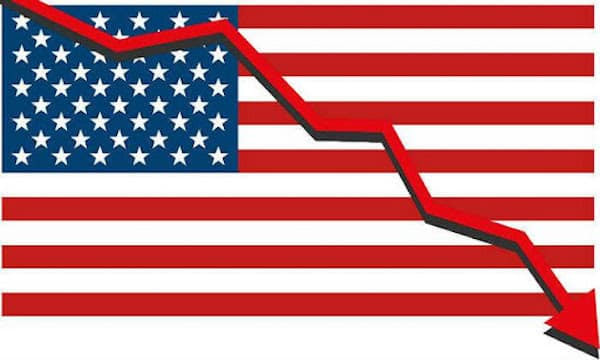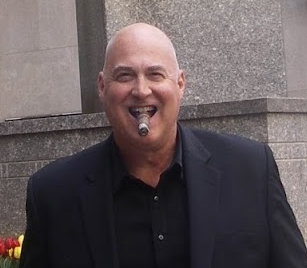By Bill Bonner, Chairman, Bonner & Partners
And I looked, and behold, a pale horse! And its rider’s name was Death, and Hell followed him. And they were given authority over a fourth of the earth, to kill with sword and with famine and with pestilence and by wild beasts of the earth.
– Revelation 6:8
SAN MARTIN, ARGENTINA – This morning…
… Italy has blocked internal travel…
… three out of four U.S. small businesses say sales are down because of the C virus…
… James Bullard, president of the Federal Reserve of St. Louis, says U.S. GDP could be cut in half, worse than the Great Depression…
… the bond market staggers as issuers – including the federal government – desperately try to raise money…
… and the “rescue” package in Congress has grown to $2 trillion.
You can follow the news as well as we can. So this week, here at the Diary, let’s lift a few rocks to look at what slimy creatures are underneath the news.
We hope to see what is really going on. And then we’ll squint… and try to see what the world looks like AFTER the crisis is past.
Bear with us… There’s a lot of ground to cover.
First, for perspective…
Pale Horse
In 1918, a pale horse appeared – the Spanish flu. A few months later, some 675,000 Americans were dead. That would be equivalent to about 1.2 million people today.
They coughed and sneezed… their lungs filled… their fevers rose… and they died.
Cities and local communities coped as best they could. But there was no panic.
No state of emergency was proclaimed, neither by any state nor by the national government.
No “shelter in place” orders were given. No face masks were distributed. No testing programs were put in place. No stores were closed. Nobody failed to show up for work (unless he was sick).
The only major public health initiative – undertaken in some cities but not others – was that schools closed early for the summer.
What the authorities didn’t do for citizens’ health, they also didn’t do for their money.
No “stimulus” was given. No deficit was run. No interest rates were cut. No emergency spending… no helicopter money… no bailouts.
With no rescue from the federales, the economy must have totally collapsed… right? Nope. That’s not what happened at all.
We’ll get back to that in a moment. But first… You’re probably more interested in 2020 than in the events of 100 years ago, right?
What’s going on now? What does it mean? What comes next? How do you protect yourself?
Is there a way to profit from it… to take advantage of the madness of crowds and the jackass policies of government?
Massive Rescue
The stock market has never fallen so fast, so hard… Nor has the government (including its central bank) ever undertaken such a massive “rescue.” What’s behind it?
Here at the Diary, we’ve been watching the wild, hothouse growth for at least 20 years, wondering how it would end.
Not trusting our own hunches and guesses, our researchers developed a Doom Index to try to give us a better idea of when the fruit was ripe.
In April of last year, the Doom Index hit “8” – indicating that it was heavy on the vine.
For the next eight months, it waited to be plucked. Then, along came the C virus.
The coronavirus was a surprise to everyone. But it didn’t cause the rot we see today; it merely set it off.
We can see that by looking back again at the last time a major virus hit the U.S., 100 years ago.
The Spanish flu killed hundreds of thousands of people back then. But stores remained open. Steel furnaces ran hot. Restaurants served meals. And people went to work as normal.
Unemployment grew, mostly because of the soldiers coming back from the war in Europe. But by the end of 1919, when it was all said and done, it had risen to only 4%. (Less by some estimates.)
Otherwise, things continued as usual. U.S. debt went down. And the stock market went up!
Today, with a total of 470 people dead, the U.S. is in such a tizzy, you’d think a whole cavalry of riders, white as chalk, had appeared on the White House lawn, commanded by the devil himself.
“Emergency war powers” are being invoked to fight a “war” on a molecule so small, it takes an electron microscope to see it.
Perfecting Social Distancing
Here in Argentina, we are under house arrest until Wednesday, when a public health nurse will come back to certify that we are virus-free.
Social distancing is no sweat for us. We’ve been practicing it all our lives. Now, we have a chance to perfect it.
And we didn’t need the feds to tell us. According to the numbers we’ve seen, a person over 70 who contracts the disease has a 1-in-10 chance of dying. Good odds. But not good enough.
In 1918, there were no epidemiologists to explain the risks of hanging out with others. Nor were there any antibiotics to fight the secondary infections. Nobody knew exactly how the virus worked, but they could see it was infectious.
Social distancing worked then… as it does now.
Governments encouraged people not to spit on the sidewalks. They were also urged to sleep with their windows open.
What they didn’t do… and didn’t need to do… was to panic into a huge program of money-printing to rescue the economy.
The economy didn’t need rescuing from a fever. It never does. It only needs rescuing from government.
Diabolical Mischief
An economy is nothing more than the agglomerated win-win deals of people going about their business of getting and spending.
They all aim to do the best they can for themselves. And they depend on market signals – prices – to tell them whether to buy, spend, sell, invest, and so forth.
In 1918, America still had a more-or-less free economy. Its price signals were still reliable. The Federal Reserve had been set up, but it had not yet flexed its muscles.
(It did however, lower bank reserve requirements, leading to a big increase in lending… and setting the economy up for a bust in 1920. More on this in a moment.)
The dollar was still backed by gold, which limited the feds’ power to print money.
The idea of bailing out a private business would have seemed outrageous. They would have said, “Any enterprise so mismanaged that it can’t withstand a crisis should be allowed to go bust.”
The idea of sending people checks, willy-nilly, would have been preposterous and impossible.
“Where in the Constitution does it give the government the power to do that?” some would have asked.
“How does it make sense to save people from their own imprudence?” others would have wondered.
“Where will the government get the money? Doesn’t all of its money have to come from the very same people it is now giving money to? What sense does that make?”
But come 2020, and nobody asks questions.
The government has so fouled the economy that you can barely take a step without needing to clean your boots. And the approach of a virus gave it the green light to bring out the Seven Princes of Hell to do their diabolical mischief.
Already underway is the biggest money-printing scheme ever seen in North America. Businesses, weakened by Fed policies, will be bailed out.
Bad managers – who used the Fed’s low interest rates to shovel billions to their shareholders and themselves – will not have to return the loot. They’ll be rescued by taxpayers. Their jobs will be saved… their fortunes revived.
Ordinary families, too, whose votes will be needed to stay in office, will be given bribes.
But what choice is there? What do you do when a deadly virus hits an economy?
Wildest Experiment
In 1918, the virus hit hard. The economy was apparently unaffected. But two years later, the Fed’s lower reserve requirements brought forth a correction… and more government inaction.
The Mises Institute explains what happened:
The economic situation in 1920 was grim. By that year unemployment had jumped from 4 percent to nearly 12 percent, and GNP declined 17 percent.
Instead of "fiscal stimulus," [President] Harding cut the government's budget nearly in half between 1920 and 1922. The rest of Harding's approach was equally laissez-faire. Tax rates were slashed for all income groups. The national debt was reduced by one-third.
… By the late summer of 1921, signs of recovery were already visible. The following year, unemployment was back down to 6.7 percent and it was only 2.4 percent by 1923.
Woodrow Wilson issued no emergency decrees during the virus crisis of 1919.
Nor did Wilson’s successor in the Oval Office, Warren Harding, promise any stimulus in 2020. Instead, Harding explained:
We must face the grim necessity… no statute enacted by man can repeal the inexorable laws of nature. Our most dangerous tendency is to expect too much of government…
The economic mechanism is intricate and its parts interdependent, and has suffered the shocks and jars incident to abnormal demands, credit inflations, and price upheavals.
The normal balances have been impaired, the channels of distribution have been clogged, the relations of labor and management have been strained. We must seek the readjustment with care and courage.…
All the penalties will not be light, nor evenly distributed. There is no way of making them so. There is no instant step from disorder to order. We must face a condition of grim reality, charge off our losses and start afresh. It is the oldest lesson of civilization.
No altered system will work a miracle. Any wild experiment will only add to the confusion.
Today, we are launched upon the wildest experiment ever undertaken in North America.
We are going to find out how far we can go – with bailouts, fake money, stock purchases, government price controls, and negative real interest rates – before the whole thing blows up.
Regards,
Bill




 RSS Feed
RSS Feed
